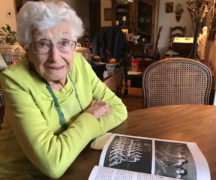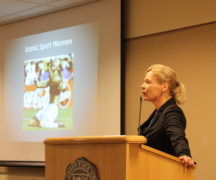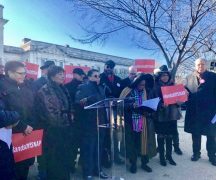By JULIE CARLE
BG Independent News
The U.S. Supreme Court’s Roe v. Wade decision and the recent Dobbs v. Jackson Women’s Health Organization ruling which overturned the 1973 decision are not the beginning of the reproductive freedom story.
“The history and arc of reproductive freedom has been an aspirational goal since the time of colonialism and slavery,” said Dr. Michele Bratcher Goodwin, speaker for a recent Women’s History Month presentation at Bowling Green State University.
“That arc begins with the very nature, the very fabric, the very thread of American slavery, and forced and involuntary reproductive servitude,” said the award-winning author, law professor, advocate and social commentator.
Looking back at history is imperative to understand the path to the recent Supreme Court decisions, Goodwin said.
“We know slavery didn’t last for a day or a week or a month. It was months that flowed into years that flowed into decades and into centuries. Slave auctions were about bidding upon and selling forced reproductive labor,” she said. Early laws in the 1600s and beyond dictated that children take on the status of their enslaved mothers, so the women bore the next generations of physical labor and sexual servitude.
Speeches and pamphlets that abolitionists used to make a case against slavery in the 19th century supported the notion that much of slavery “was rooted in the sexual subordination of Black women,” according to Goodwin. Newspapers of the time normalized language about Black girls and women being sold as “breeding wenches” and advertisements offered rewards for the enslaved women who dared to escape.
“When I think about those who were the shapers of democracy, beyond those who wrote on paper, though that was important and profound, I think of those who did it with their blood, sweat and tears, those who were bruised and beaten on their way to vote and who were kicked out of department stores and restaurants because they dared to enter in a front door rather than a back door,” she said.
They were the women and men who pushed the country toward a second reconstruction with the 1964 Civil Rights Act, which included equality for women, and the 1965 Voting Rights Act.
Roe v. Wade in context
The Supreme Court’s ruling on Roe v. Wade in 1973 was a 7-2 opinion and five of the seven justices were Republican-appointed. Justice Harry Blackmun, who President Richard Nixon appointed, wrote the opinion.
“This becomes relevant to history because much of the narrative today about the Roe decision is that it was some far-left fringe group that pressured the court rather than an understanding for factually where the court sat,” Goodwin said.
The times were different. Prescott Bush, the father of President George H.W. Bush, was the treasurer of Planned Parenthood. George H.W. Bush supported Title X, the basic public health care initiative which provided reproductive health care services for the poorest of persons in the U.S.
Dr. Martin Luther King Jr. was named the humanitarian of the year in 1966 by Planned Parenthood. In the speech he wrote accepting the award, King said that family planning was essential to bring about a society of equality where the needs, conditions and interests of women were included, thus tying together the civil rights and women’s rights movements.
“There is something to be said about learning our history and sitting with it. It allows us to be more humane, to give dignity to those in the past and to think about giving dignity to those in the present,” Goodwin said.
So, what has changed since the Roe v. Wade decision, Goodwin asked.
“The court looked different,” she said. Ruth Bader Ginsburg died, and Brett Kavanaugh, Amy Coney Barrett and Neil Gorsuch were added to the court during the last president’s administration which had indicated a commitment to overturning Roe v. Wade.
In the Dobbs’ decision on June 24, 2022, the court had indicated it was important to look at history, “but they didn’t look at any of the history. They never bothered to engage in questions of these times,” she said.
Goodwin believes the ruling threatens freedom of speech, but she also acknowledged and praised the work of many groups and individuals who are actively working to keep the issues at the forefront.





